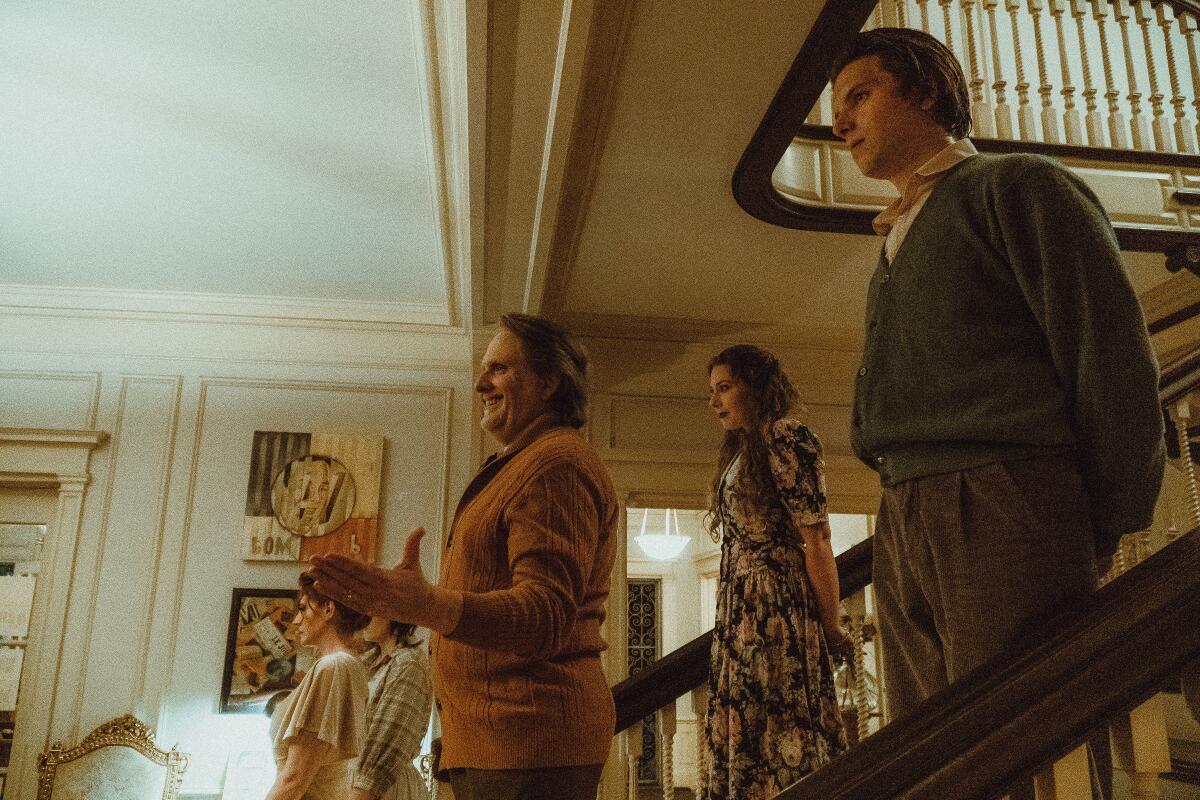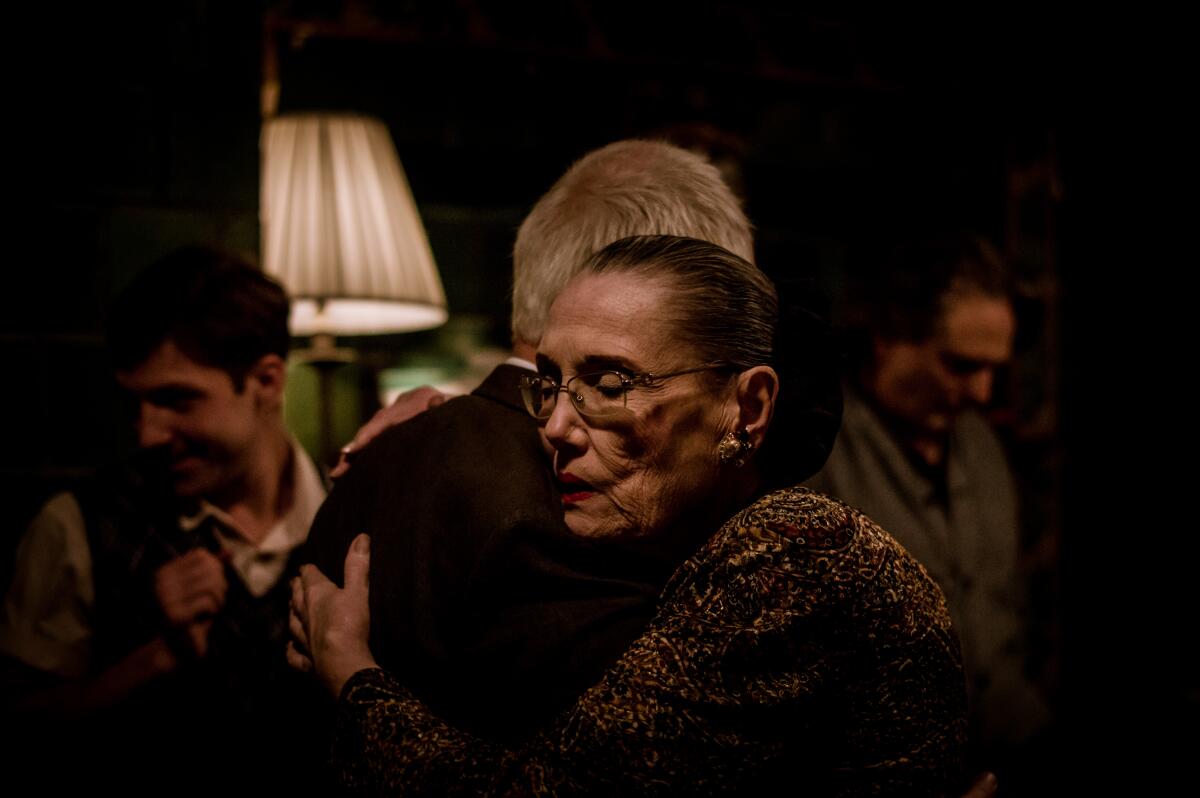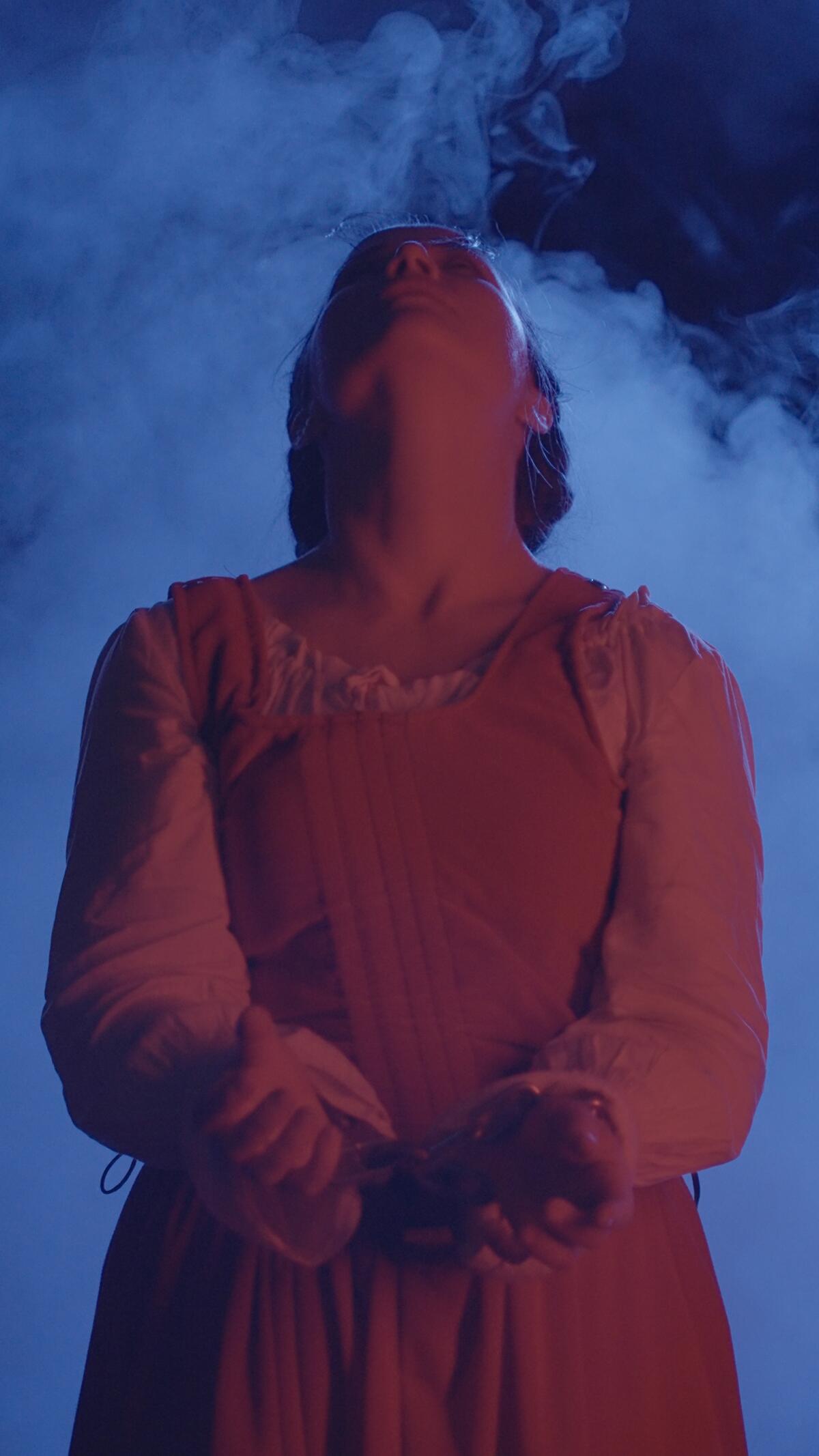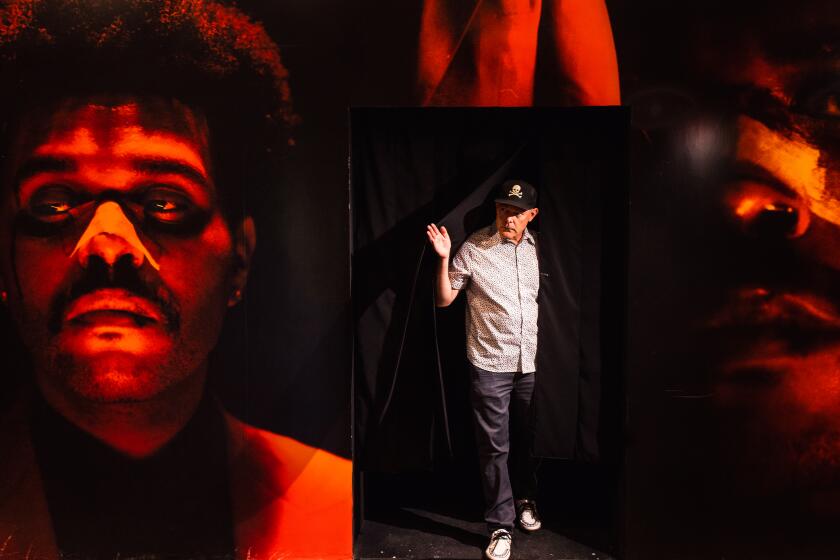Halloween season brings out the best in L.A. immersive scene with ‘The Willows’ and ‘Witch!’

- Share via
Just as a recent production of “The Willows” was starting to reveal its intentions around a dinner table, the immersive theater endeavor ripped me away from the action. I was being scolded by the matriarch of the house, and the butler was quick to order me out of my seat. My offense? Resting my elbows on a dinner table. I didn’t even have time to nod a goodbye to my partner as I was instructed to stand, leave the dining room and sit alone in a cramped, red-lit closet.
The first thing that caught my eye was a crumpled paper, which read, “I’m bad because I put elbows on the table.” While I wasn’t asked to write a confession, such a clever detail made it clear that I was now part of a lineage of poorly mannered guests at this haunted house.
As lights and audio flickered, the setting was eerie — bordering on sinister. I was told I had two minutes to sit and contemplate my actions, and while I knew this meant I was missing out on additional plot-building action that was occurring in the dining room, I wanted to be careful to make the most of my time in solitude.
Before me, on the back of the closet door and scribbled in broken sketch lines, was a family tree, which was designed to look hurriedly drawn. While “The Willows” is set in a residence near Koreatown, what I was looking at wasn’t crafted out of familial love. This was genealogy laid out as if a puzzle, the work of someone trying to make sense of one family’s ancestry rather than celebrate it. More than just creating a sense of presence, it gave “The Willows” a feeling of lived-in history.
We talk to John Murdy, the architect of Universal’s Halloween Horror Nights, on transforming the emotional terror of the Weeknd’s music into a horror attraction.
What had begun as dinner theater with murder-mystery trappings was now starting to subtly shift. There was a puzzle laid out at the start of the evening. A son and a husband, Jonathan, had suddenly and unexpectedly died. But “The Willows” is not a whodunit. “The Willows” instead aims to disorient the audience, through improvisation and light games, until the mystery centers on us. Set to accommodate fewer than 20 audience members at a time, “The Willows” will divide and split groups until everyone is receiving intimate encounters with actors, the only common denominator among the various tracks is that each will treat us as the protagonists.
First staged in 2017, JFI Productons’ “The Willows” has become a staple of Los Angeles’ immersive scene, a community that typically springs to life with eerie enthusiasm each Halloween season. Each fall sees increasingly story-driven haunts at theme parks such as Knott’s Berry Farm and Universal Studios Hollywood, the latter of which expanded its scare-palette this year with a walk-through attraction influenced by the Weeknd, as well as a host of more long-form theatrical productions. This year that includes a revival of “The Willows,” as well as the Downtown Repertory Theater Company’s “Witch!,” staged in Altadena’s Mountain View Mausoleum. Both “The Willows” and “Witch!” run through early November.
“With horror, we can immediately put people on the defense, build their nerves up, and make them be really alert and feel present,” says JFI founder Justin Fix. “The Willows” follows the company’s recent revival of its ‘70s-themed disco immersive show “Night Fever,” which focused more on a communal feel rather than the intimacy present in “The Willows.” The latter, for instance, has seven distinct tracks that audience members can follow, depending on which actors they get paired up with and often results in encounters with just one or two other people. The 2022 revival, says Fix, is also meant to be a proof-of-concept, as he hopes to have the show start touring other cities in 2023.

During one moment in “The Willows,” I found myself trapped under a bed with an actor, Jacob Miller’s character named Conrad, and a stranger as we eavesdropped on another group. As the scene went on, it became borderline stressful as I tried to not be discovered while alternately calming the fears of the panicked Conrad, a character grieving the loss of his family member while also masking his intentions for the dinner guests. Such moments, says Fix, help the audience to improvise and let go of any awkwardness they may have brought with them that evening. “The fear begins to live, and the tension begins to build, and you naturally find yourself living in a horror movie,” says Fix.
“Witch!,” too, follows a multi-act structure in which the production flips the focus on its audience by play’s end. The show, set among multiple locations in and out of the Altadena mausoleum — I saw an earlier production at Heritage Square Museum — is inspired by the true-life witch trials in the Pendle Hill area of England in 1612. It starts simply, with the audience seated in the round as we learn of religious fervor and how it’s intertwined with discrimination, but gradually segues into additional themes. The trials are framed, in part, as the result of class divisions and economic desperation amid families jockeying for power and fearing threats to their status quo.

The strength of both shows is that they pivot from traditional Halloween-season frights — no jump scares, nothing that overly stresses cast or audience members — to instead try to personalize the experiences. “It speaks to sorrow, and it’s heavy on grief,” says Fix of “The Willows,” but I saw a show about an upper-crust family who attempted to wall themselves off from society to the point that they lived only in fear and denial. Likewise in “Witch!,” where worshiping in private can become cause for conspiracy theories to run rampant. In each, the audience gradually transitions from mystery-seekers or problem-solvers into roles of feeling othered.
A sense of playfulness also permeates both. Early in “Witch!” we watch, for instance, a brief puppet show, one in which other cast members will join and speak with the audience, and there are moments in “The Willows” when they play light games, such as mimicry or deception exercises to loosen audience members up and foster participation. Fix has often said escape rooms are a primary influence on JFI’s immersive work, which regularly includes marketing-focused pop-ups for film and television properties, and he sought to create an experience that would encourage escape room-level participation without becoming a pure puzzle experience.
The trick is making the games feel integrated into the story, to the point that games advance the story. While a ghost tale like “The Wilows” can have, depending on your track, a seance scene or even one that alludes to torture, there will also be moments in which a mother recalls time with her son by speaking of the games they would play together.
“The first 45 minutes puts our audience in a state of improv, and who they want to be for the night and befriend and align with,” Fix says. “When we move to puzzle games, it’s about finding out how we speak to our audience. How do we keep them active in the experience? How do you get them to play? It’s as simple as reminiscing about childhood games about how a son would follow everything the mother did. It’s a storytelling mechanism.”
And it creates a sense of guardrails and rules. When I was given at one point in “The Willows” a doll, and instructed to care for it as if it were my own child, I didn’t dare deviate, though I was curious how the cast would react if I didn’t follow their orders. The next day, I thought I perhaps shouldn’t have played my role so dutifully. After all, even a timeout room is part of the show.
'The Willows'
'Witch!'
More to Read
The biggest entertainment stories
Get our big stories about Hollywood, film, television, music, arts, culture and more right in your inbox as soon as they publish.
You may occasionally receive promotional content from the Los Angeles Times.












